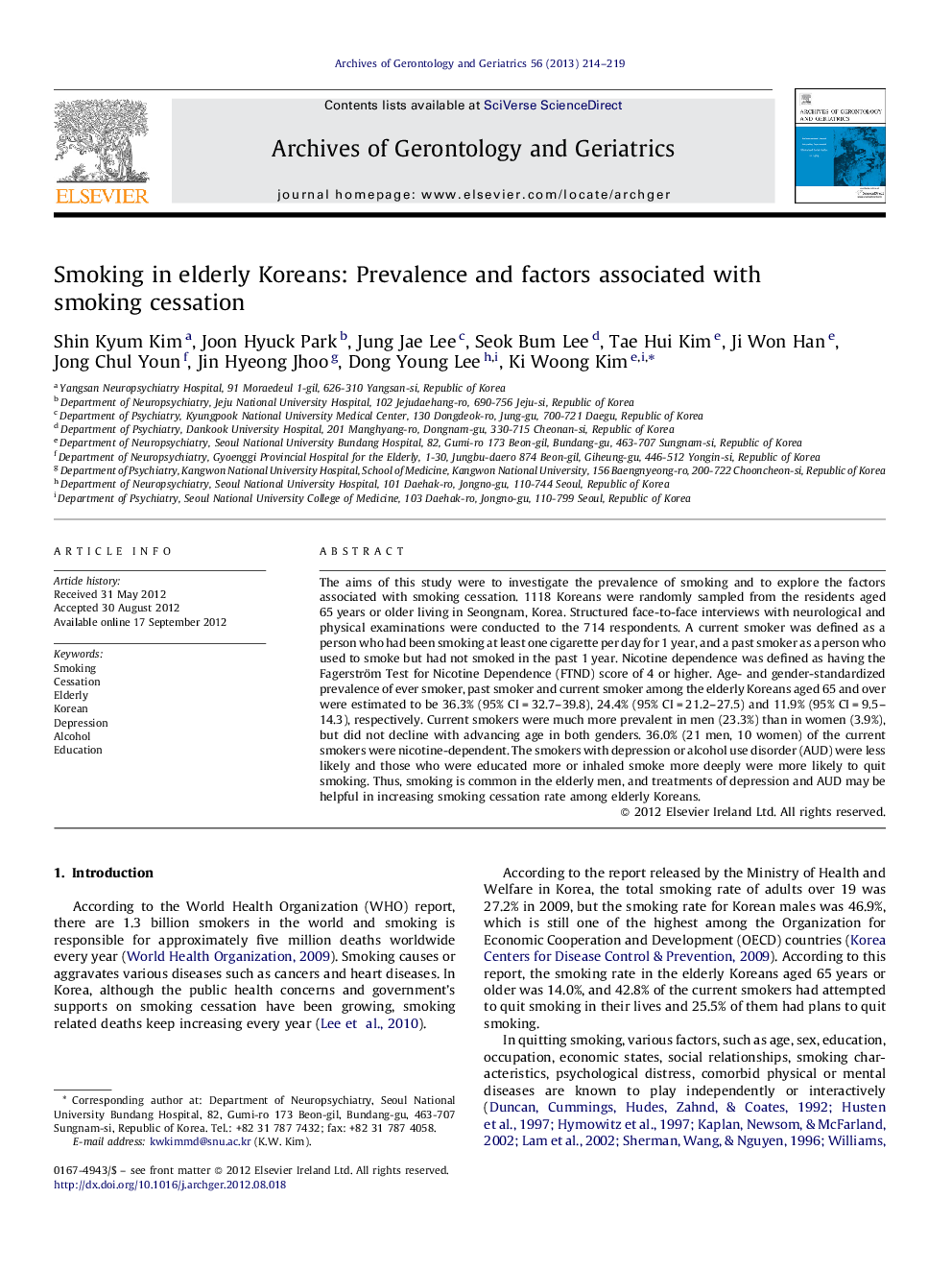| Article ID | Journal | Published Year | Pages | File Type |
|---|---|---|---|---|
| 8258129 | Archives of Gerontology and Geriatrics | 2013 | 6 Pages |
Abstract
The aims of this study were to investigate the prevalence of smoking and to explore the factors associated with smoking cessation. 1118 Koreans were randomly sampled from the residents aged 65Â years or older living in Seongnam, Korea. Structured face-to-face interviews with neurological and physical examinations were conducted to the 714 respondents. A current smoker was defined as a person who had been smoking at least one cigarette per day for 1Â year, and a past smoker as a person who used to smoke but had not smoked in the past 1Â year. Nicotine dependence was defined as having the Fagerström Test for Nicotine Dependence (FTND) score of 4 or higher. Age- and gender-standardized prevalence of ever smoker, past smoker and current smoker among the elderly Koreans aged 65 and over were estimated to be 36.3% (95% CIÂ =Â 32.7-39.8), 24.4% (95% CIÂ =Â 21.2-27.5) and 11.9% (95% CIÂ =Â 9.5-14.3), respectively. Current smokers were much more prevalent in men (23.3%) than in women (3.9%), but did not decline with advancing age in both genders. 36.0% (21 men, 10 women) of the current smokers were nicotine-dependent. The smokers with depression or alcohol use disorder (AUD) were less likely and those who were educated more or inhaled smoke more deeply were more likely to quit smoking. Thus, smoking is common in the elderly men, and treatments of depression and AUD may be helpful in increasing smoking cessation rate among elderly Koreans.
Related Topics
Life Sciences
Biochemistry, Genetics and Molecular Biology
Ageing
Authors
Shin Kyum Kim, Joon Hyuck Park, Jung Jae Lee, Seok Bum Lee, Tae Hui Kim, Ji Won Han, Jong Chul Youn, Jin Hyeong Jhoo, Dong Young Lee, Ki Woong Kim,
